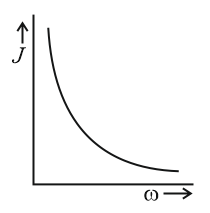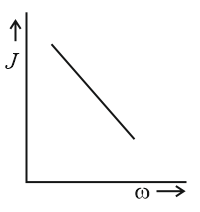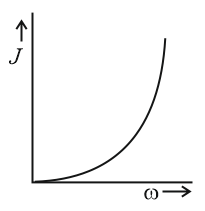MEDIUM
NEET
IMPORTANT
Earn 100
The graph between the angular momentum and angular velocity for a body will be:
(a)

(b)

(c)

(d)

100% studentsanswered this correctly

Important Questions on Rotational Mechanics
MEDIUM
NEET
IMPORTANT
When a man is rotating in a plane about a fixed point, his angular momentum is directed along :
HARD
NEET
IMPORTANT
A ring of mass and diameter is rotating about its geometrical axis at rotations per minute. Its moment of inertia and angular momentum will be, respectively,
EASY
NEET
IMPORTANT
The rotational kinetic energy of two bodies of moments of ineritia and respectively are same. The ratio of their angular momentum is :-
HARD
NEET
IMPORTANT
A fan of the moment of inertia is to run up to a working speed of revolution per second. Indicate the correct value of the angular momentum of the fan:
EASY
NEET
IMPORTANT
A mass M is moving with a constant velocity parallel to axis. Its angular momentum with respect to the origin is:
MEDIUM
NEET
IMPORTANT
Two bodies have their moments of inertia and respectively about their axis of rotation. If their kinetic energies of rotation are equal, their angular momenta will be in the ratio
MEDIUM
NEET
IMPORTANT
The rotatinal kinetic energy of a body is and its moment of inertia . The angular momentum is
HARD
NEET
IMPORTANT
A body of mass and radius of gyration is rotating about an axis. If angular speed is , then angular momentum will be:-
